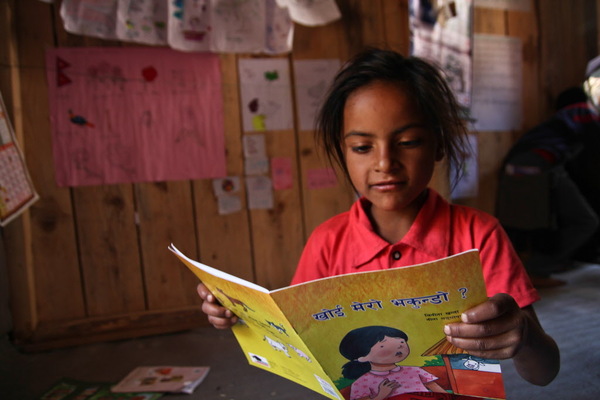Some of my favorite childhood memories involve curling up with a good book and embarking on a world of adventures unfolding on each page. But for 250 million children around the world who cannot read or write, getting lost in a story is a pleasure they may never get to experience.
For me, it’s hard to imagine myself flipping through a book and only seeing pages full of symbols, unaware of their meaning or the stories they tell. But for more than a third of all primary-school age children around the world, that’s a reality they face every day. And going to school is not enough to guarantee learning.
Too many children around the world are at risk of never learning to read or read well, whether they attend school or not. Children like 10-year-old Sita from Nepal. Sita lives in Budhathok village, a remote farming community, where the nearest market is 90 minutes by car (if you’re lucky to have a car), families are struggling to make ends meet, and books and time for reading are a luxury they often can’t afford.
Sita, 10, reads at home with books borrowed from Save the Children’s mobile library in her village in rural Nepal. Save the Children’s new literacy report proves that practice outside the classroom is the key to learning to read, especially among girls, children living in poverty and those with few books or readers at home. Photo by Sanjana Shrestha.
Knowing the importance of practicing reading at home, Save the Children brought


